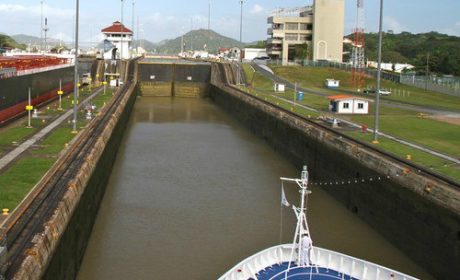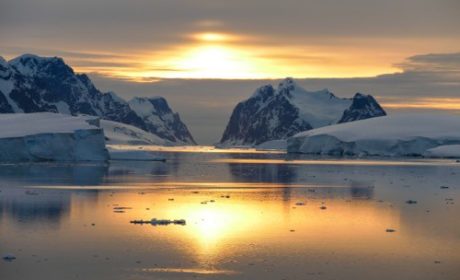After Alan and I returned from cruising to Antarctica, we kept asking each other, “Did we really go there?”
And, now, the trip seems so distant. Perhaps it’s that our senses were overloaded so it was hard to process all that we experienced on this trip of a lifetime that’s long been at the top of our bucket list.
Many of you emailed to ask us: What was Antarctica really like? Were the seas rough in the Drake Channel? What did you pack?
Here are there questions and our answers. We’ll add more as we think of things that you didn’t ask. There’s a lot of preparation that goes into an Antarctica cruise.
Table of Contents
How rough were the seas?
Devon, my Delta Zeta sorority sister at Georgia State University asks, “How rough were the seas—from someone who gets motion sickness?”
I suffer motion sickness too, Devon, especially at sea. So I was relieved that our passage from Ushuaia to the Antarctic Peninsula was a calm one. It could just have easily been stormy. Which is to say that seas are unpredictable, but the journey is worth it.
We had stormy seas near the Chilean fjords that knocked me out of commission for a day. And later on in the cruise, on the way to South Georgia, I missed dinner due to motion sickness.
But that one was my own fault. When the seas are bouncy, I know that using my eyes to read or write can bring on seasickness. I had spent the afternoon at Seabourn Square (the ship’s lounge area) coloring pages from my book.
Sure enough, even after taking a dose of Meclizine, I spent the evening eating crackers, sipping ginger ale and sleeping—my greatest seasick symptom, besides queasiness, is a huge need to sleep.
After that, I was more vigilant about following this protocol (check with your doctor to create your seasick checklist):
- Wear acupressure wrist bands. I bought mine in the Quest’s gift store after that stormy day in the Chilean fjords.
- Take ½ Meclizine tablet in the a.m. and another ½ pill in the p.m. Although Meclizine does not require a prescription, you must ask the pharmacist for it. Be sure to check with your doctor for advice on seasick medications.
- Avoid activities like reading or writing that aggravate motion sickness. Your triggers may be different.
- Snack on candied ginger, available from room service or located on a table near dining venues.
Boomer Travel Tip
MedjetAssist Members who are hospitalized 150 miles from home receive medical transport to a home-country hospital of choice. Memberships from $99.
How many bags did you take?
Betsy of Passing Thru wants to know, ” Would you please share how many bags you’ve taken on this trip?”
If you saw the “what I wore” photos on my Facebook profile, you’ll understand why Betsy asked the question. Alan and I took two large, checked bags—one of them a 26″ rolling duffle bag—and we each traveled with a rolling carryon and backpack. The bulky gear required for Antarctica necessitated the checked rolling duffle bag.
I’ll be writing a separate article on the gear that we took, what I would leave home on the next trip to Antarctica and the items that worked really well for us. And for those of you who asked on Facebook, I’ll write another article that will include a list of clothes I wore for nights on the ship with tips for mixing and matching outfits as well as toiletries that I consider a must.
Why did we choose this cruise versus a true expedition cruise?
Cindy, a reader on the My Itchy Travel Feet page on Facebook, asks, “What are your thoughts about Seabourn versus the Silversea itineraries and onboard services? I do understand Silversea is considered more of an expedition cruise, but am curious to know why you chose Seabourn over Silversea.”
You are right, Cindy that Silversea is more of an expedition cruise. We chose this Seabourn cruise because of the mix of traditional holiday cruise and expedition adventure. Alan and I wanted to celebrate Christmas and New Year’s Eve on a ship but we also liked the idea of exploring Antarctica.
On this cruise, Seabourn offered the same types of entertainment that you’d find on of their luxury cruise journeys. But the Antarctica and South Georgia portions of the trip offered one landing or zodiac tour per day along with many lectures from the expedition staff. Guests could also sign up for kayak excursions (at an additional cost).
For boomer travelers looking for a “taste” of Antarctica or who are unsure about the rigors of a true expedition cruise, Seabourn offers an excellent experience. I’ll be writing a detailed review of our trip soon.
Boomer Travel Tip
In today’s travel climate, trip insurance is a must. Compare policies and rates at InsureMyTrip.
Is the ship’s hull rated for ice in Antarctica?
Vivienne of WAVEjourney wants to know, “Is the ship’s hull rated for Antarctica/icebergs?”
Seabourn Quest is not an icebreaker class ship, Vivienne. But according to an article at Avid Cruiser, the hull has been thickened to certify as Ice Class plus many other modifications have been made to accommodate expedition-type excursions.
Alan and I also observed that Captain Magnus Bengtsson was extra cautious during the time in Antarctica and South Georgia. He took no chances with the Quest. If the weather became too windy or seas too rough, he moved the Quest to a safer location.
How big are the icebergs?
Suzanne Fluhr from Boomeresque asks, “Do you worry about the part of the iceberg that’s under the water? Have you seen any calve off a glacier?”
According to the Navigation Center at the U.S. Department of Homeland Security (who knew?) 7/8ths of an iceberg’s mass is located below the water. But that was never an issue during our journey as Captain Bengtsson stayed just close enough for us to take photos but far enough away to keep the Quest out of danger. And, unfortunately, Suzanne, we heard glaciers calve but didn’t see any in action, although other passengers reported seeing them.
What was your favorite Cruising to Antarctica experience?
Jo Hooks, another Facebook reader asks the hardest question of all, “What was the best event in your travels?”
That’s a difficult one to answer, Jo. I think it’s a toss-up between the evening cruise that Quest made through Antarctica’s Neumayer Channel and walking among the penguins, fur seals and elephant seals at Grytviken in South Georgia (I’ll be writing a destination article about this experience).
Thanks to all who submitted questions about cruising to Antarctica. But there are plenty that you didn’t ask. In upcoming articles, we’ll be covering:
- What happens in a medical emergency when the ship is in Antarctica?
- Do I have to take every excursion?
- Will the light keep me from sleeping?
- Should I book kayaking excursions ahead of time?
- What happens if weather conditions or rough seas cancel a landing?
- What precautions are taken to protect the environment?
- How cold will it be?
- Should I bring walking sticks?
- How physically fit do I need to be for Antarctica?
- What was a day in Antarctica like?





